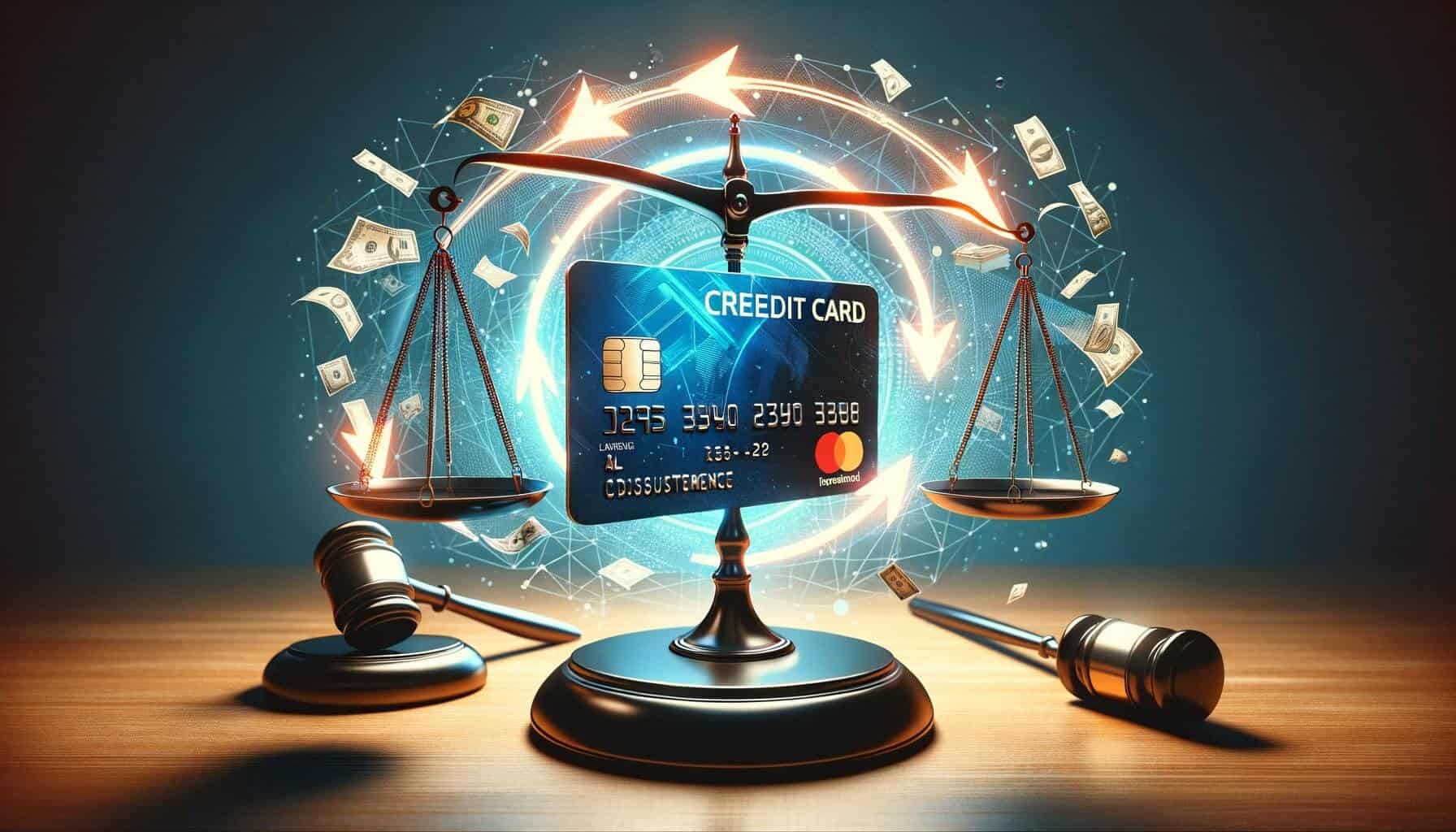
By Cindy Gardea January 13, 2025
Chargebacks are a common occurrence in the world of business, particularly in the e-commerce industry. They can be a frustrating and costly experience for merchants, as they often result in lost revenue and additional fees. However, there is a process known as chargeback representment that can help merchants fight back against unjustified chargebacks and recover their funds.
In this article, we will explore what chargeback representment is, how it works, and the key strategies for successful representment.
Understanding Chargebacks: Causes and Consequences

Before delving into chargeback representment, it is important to understand the causes and consequences of chargebacks. A chargeback occurs when a customer disputes a transaction and requests a refund directly from their bank or credit card issuer.
There are various reasons why chargebacks may occur, including fraud, dissatisfaction with the product or service, or unauthorized transactions. Regardless of the reason, chargebacks can have significant consequences for merchants, such as financial losses, damage to reputation, and increased fees from payment processors.
What is Chargeback Representment?
Chargeback representment is the process by which merchants dispute and challenge chargebacks in order to recover lost funds. It involves gathering evidence and submitting a compelling case to the bank or credit card issuer to prove that the chargeback is unjustified.
The goal of representment is to convince the issuing bank to reverse the chargeback and return the funds to the merchant. It is important to note that chargeback representment is not a guaranteed solution, as the outcome depends on the strength of the evidence presented and the policies of the issuing bank.
The Process of Chargeback Representment

The process of chargeback representment can be complex and time-consuming, but it is essential for merchants who wish to fight back against unjustified chargebacks. The first step in the representment process is to gather all relevant documentation and evidence to support the merchant’s case.
This may include order details, shipping information, customer communication, and any other relevant information that can prove the validity of the transaction. Once the evidence is collected, it is important to organize and present it in a clear and concise manner.
The next step is to submit the representment case to the bank or credit card issuer. This can typically be done through an online portal or by sending a physical letter. It is important to follow the specific guidelines and procedures outlined by the bank or issuer to ensure that the case is properly submitted.
After the case is submitted, the bank or issuer will review the evidence and make a decision. If the representment is successful, the chargeback will be reversed, and the funds will be returned to the merchant. However, if the representment is unsuccessful, the chargeback will stand, and the merchant will lose the funds.
Key Strategies for Successful Chargeback Representment

Successfully challenging chargebacks requires a strategic approach and careful attention to detail. Here are some key strategies that merchants can employ to increase their chances of success in chargeback representment:
1. Promptly respond to chargebacks: Time is of the essence when it comes to chargeback representment. Merchants should respond to chargebacks as soon as possible to avoid missing deadlines and to demonstrate their commitment to resolving the issue.
2. Gather compelling evidence: The strength of the evidence presented is crucial in chargeback representment. Merchants should gather all relevant documentation, such as order details, shipping information, and customer communication, to support their case. This evidence should clearly demonstrate that the transaction was valid and that the customer received the product or service as described.
3. Understand the reason codes: Chargebacks are typically assigned a reason code, which indicates the specific reason for the dispute. Merchants should familiarize themselves with the different reason codes and tailor their representment strategy accordingly. By addressing the specific concerns raised by the customer, merchants can increase their chances of success.
4. Maintain accurate records: Keeping accurate records of all transactions, customer communication, and shipping information is essential for successful chargeback representment. These records can serve as valuable evidence and help merchants build a strong case against unjustified chargebacks.
5. Monitor chargeback trends: By monitoring chargeback trends, merchants can identify patterns and take proactive measures to prevent future chargebacks. This may involve implementing fraud detection tools, improving customer service, or addressing any product or service issues that may be contributing to chargebacks.
Common Mistakes to Avoid in Chargeback Representment
While there are strategies that can increase the chances of success in chargeback representment, there are also common mistakes that merchants should avoid. These mistakes can weaken the merchant’s case and reduce the likelihood of a successful representment. Here are some common mistakes to avoid:
1. Lack of documentation: Failing to gather and present sufficient evidence is one of the most common mistakes in chargeback representment. Merchants should ensure that they have all relevant documentation to support their case, including order details, shipping information, and customer communication.
2. Inconsistent or incomplete evidence: Inconsistencies or gaps in the evidence can raise doubts and weaken the merchant’s case. It is important to ensure that all evidence is accurate, complete, and consistent with the merchant’s claims.
3. Ignoring reason codes: Each chargeback is assigned a reason code, which indicates the specific reason for the dispute. Ignoring or failing to address the reason code can significantly reduce the chances of a successful representment. Merchants should tailor their representment strategy to address the specific concerns raised by the customer.
4. Poor communication with customers: Effective communication with customers can help prevent chargebacks in the first place. Merchants should strive to provide clear and accurate product descriptions, promptly address customer concerns, and maintain open lines of communication throughout the transaction process.
The Role of Documentation in Chargeback Representment
Documentation plays a crucial role in chargeback representment. It serves as the evidence that supports the merchant’s case and helps to establish the validity of the transaction. Without proper documentation, it becomes difficult for merchants to prove that the chargeback is unjustified and recover their funds. Here are some key types of documentation that merchants should gather and present in chargeback representment:
1. Order details: Order details, such as the date of purchase, the amount charged, and the product or service purchased, provide essential information about the transaction. This documentation helps to establish the validity of the transaction and refute any claims made by the customer.
2. Shipping information: If the transaction involves physical goods, shipping information can be crucial in chargeback representment. Proof of delivery, such as tracking numbers, delivery confirmation, or signed receipts, can help demonstrate that the customer received the product as described.
3. Customer communication: Any communication between the merchant and the customer can serve as valuable evidence in chargeback representment. This may include emails, chat logs, or phone call recordings that demonstrate the merchant’s efforts to resolve any issues or address the customer’s concerns.
4. Refund or return policies: Merchants should also provide documentation of their refund or return policies to show that they have clear guidelines in place for handling customer disputes. This documentation can help establish that the customer had the opportunity to resolve the issue through the merchant’s established procedures before initiating a chargeback.
Leveraging Technology for Effective Chargeback Representment
Technology can play a significant role in streamlining and improving the chargeback representment process. By leveraging technology, merchants can automate certain tasks, gather and analyze data more efficiently, and increase their chances of success. Here are some ways in which technology can be leveraged for effective chargeback representment:
1. Chargeback management platforms: Chargeback management platforms provide merchants with tools and resources to streamline the representment process. These platforms often include features such as automated case creation, evidence management, and analytics to help merchants track and manage chargebacks more effectively.
2. Fraud detection tools: Fraud detection tools can help merchants identify and prevent fraudulent transactions, reducing the likelihood of chargebacks. These tools use advanced algorithms and machine learning to analyze transaction data and detect patterns or anomalies that may indicate fraudulent activity.
3. Data analytics: Analyzing chargeback data can provide valuable insights into the root causes of chargebacks and help merchants identify areas for improvement. By analyzing trends and patterns, merchants can take proactive measures to prevent future chargebacks and improve their overall business operations.
4. Customer dispute resolution platforms: Some technology platforms specialize in customer dispute resolution and can help merchants resolve customer disputes before they escalate to chargebacks. These platforms provide a centralized system for managing and resolving customer complaints, reducing the likelihood of chargebacks and improving customer satisfaction.
Frequently Asked Questions about Chargeback Representment
Q1. What is the difference between a chargeback and a refund?
A chargeback is a dispute initiated by the customer with their bank or credit card issuer, while a refund is a voluntary return of funds by the merchant. Chargebacks are typically more complex and have more severe consequences for merchants, as they often involve additional fees and damage to reputation.
Q2. How long does the chargeback representment process take?
The duration of the chargeback representment process can vary depending on various factors, such as the complexity of the case, the responsiveness of the bank or issuer, and the availability of evidence. In general, the process can take anywhere from a few weeks to several months.
Q3. Can chargebacks be prevented?
While it is not possible to completely eliminate chargebacks, there are measures that merchants can take to reduce their occurrence. Implementing fraud detection tools, improving customer service, and addressing any product or service issues can help prevent chargebacks.
Q4. What are the fees associated with chargebacks?
Chargebacks often come with additional fees for merchants, including chargeback fees imposed by payment processors and potential fines or penalties from banks or issuers. These fees can vary depending on the merchant’s agreement with their payment processor and the policies of the bank or issuer.
Conclusion
Chargeback representment is a critical process for merchants who wish to fight back against unjustified chargebacks and recover their funds. By understanding the causes and consequences of chargebacks, gathering compelling evidence, and employing key strategies, merchants can increase their chances of success in representment.
It is important to avoid common mistakes, maintain accurate records, and leverage technology to streamline the representment process. While chargeback representment is not a guaranteed solution, it is a valuable tool for merchants in their ongoing battle against chargebacks.
